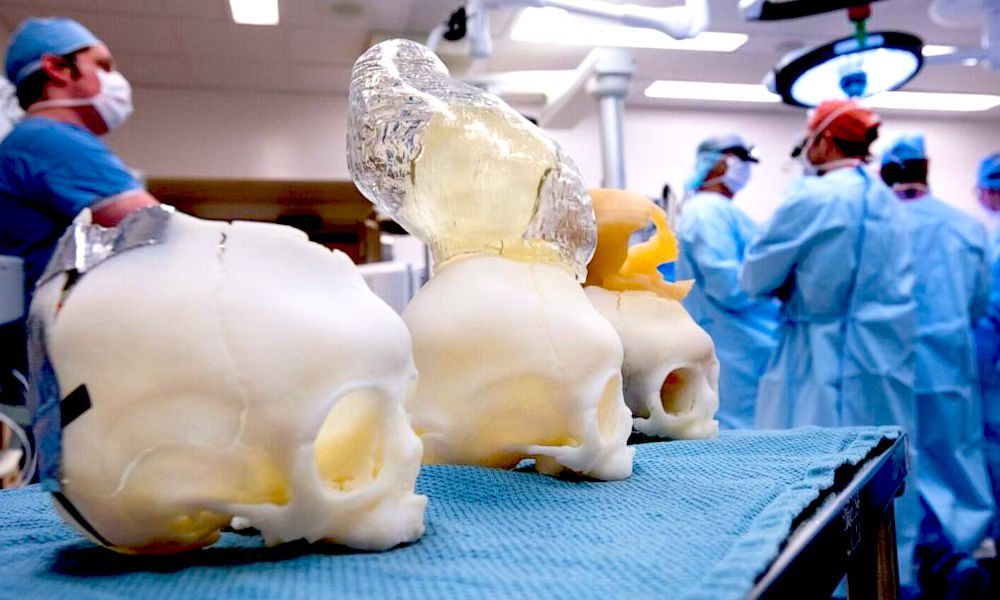Child Born with Brain Outside of Skull Saved by 3D Printing

Toggle Dark Mode
An infant who was born with his brain outside of his skull was saved with the help of 3D-printing technology.
Doctors told Dustin and Sierra Yoder — the parents of young Bentley — that their child did not have much chance at survival. At 22 weeks into Sierra’s pregnancy, Bentley was diagnosed with encephalocele, a rare condition in which portions of the brain protrude from gaps in an infant’s skull, according to Gizmodo.
Bentley was born on October 31, 2015. In the hospital, the nurses — who were sure Bentley would die — did not bother to weigh him, suction the fluid out of his throat, or even clean him off after the birth, Statnews wrote.
But aside from the brain condition and a staph infection in his lungs, Bentley, over the next few months, continued to fight — and, much to everyone’s surprise — developed relatively normally, according to Newser.
Last month, Bentley — who was seven months at the time — underwent reconstructive surgery. Doctors realized that they could not simply remove the brain tissue that was growing outside of his skull, as it might impair cognitive functions, according to Gizmodo.
But Dr. John Meara, of Boston Children’s Hospital, had a plan. He would cut Bentley’s skull, spread it out to make it larger, and close the operating point with segments from other parts of his skull.
Meara, during the planning phases of the surgery, practiced on 3D-printed scans of Bentley’s skull. He practiced slicing and operating on the plastic model, and through careful planning, determined that Bentley’s brain would fit into the newly reconstructed skull, and the operation had a shot at success.
The surgery took a total of six hours, but at the end of it, Bentley was fine, The Washington Post wrote.
It’s been almost a month since Bentley’s surgery, and the child is reportedly doing well. Although, doctors note, it’s always possible that he may develop issues as a result of the condition down the road.
“Because of how different his brain really is, (we) have no one to compare him to,” Sierra Yoder told the Post.
“We just have to take it step by step,” she added.
Featured Photo Katherine C. Cohen







